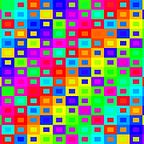Lighting and Atmosphere
Designing Spaces Around Light and Materiality
Fuzzy Performance
How the day moves inside a house weaves a host of phenomena together such as light, comfort, views and energy whose interconnections are difficult to describe but crucial to the design of a home. What areas are sunny or shaded, which window can be used for breeze or sat next to on a cold day for warmth, are all intimate moments in a building that impart a sense of place. They are also measures of the building’s energy performance, intended or not. Windows do not just provide views but also mitigate climate by passively cooling or warming the building. Light needs to be controlled towards an effect, just as the materials and views do. This confluence of material, orientation and light create a set of sometimes competing demands that also ineffably capture the feeling of the architecture. Performance and feeling are two sides of the same coin. We’re interested in this problem of the ineffable in home design and being able to see all of the complexity at once, orientation/daylight/materiality in order to be precise about notions of performance and approximate something as elusive as atmosphere.
Sun Paths and Diffused Light
Lighting is the tool that lets you see atmosphere in action. By studying the effects of sunlight in section (horizontal and vertical), the direction of the house is controlled to provide a lighting experience unique to its place. The ability to visualize the interior quality of light, through any time of the year, with the same precision of a plan or section drawing brings this abstract concept into a more tactile relief. While there are numerous tools and studies of solar gain and day lighting levels, being able to model materials, and the diffused light produced by these in a space gives you an aesthetic analysis tool in addition to the energy data.
Views vs Light
The adversarial nature of providing openings for views while allowing for heat gain/loss is a universal dichotomy of building design. Sometimes the perfect spot for a view demands that a window be in shade, or the opposite, a window might be needed for necessary heat gain. There is no simple answer as it depends on the site, its climate and the time of day in the year.
The Formula of Place
When architects talk of ‘siting,’ or the even more elusive term ‘place,’ they often refer to the bundle of issues that describe a building’s occupation on the land. Those issues are sometimes specific to the building itself such as its orientation to views, its material make up and its use, but they can also be universal issues the building shares with other buildings. How it shares in the same source of daylight, and participates in the same rhythms of the day, creates a deep significance of a building tied to a larger context.
